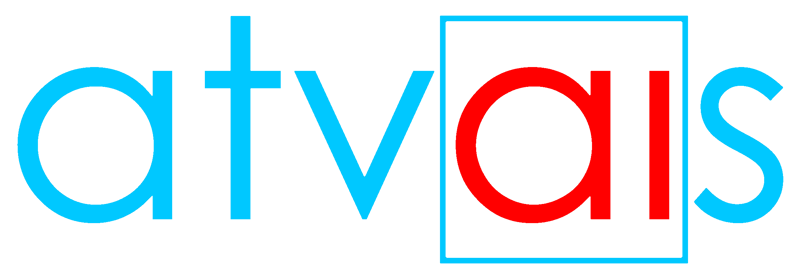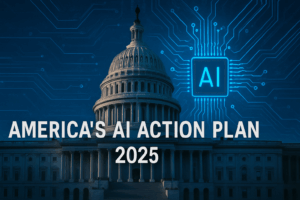The EU Artificial Intelligence Act, adopted in 2024, is the European Union’s first comprehensive law targeting artificial intelligence technologies. Designed to regulate the development and deployment of AI, it is now in the early stages of a phased rollout through 2027. As the first legal framework of its kind globally, the Act seeks to balance innovation with ethical standards and human rights protections.
The Act’s progressive enforcement aims to give businesses time to align with new requirements while enabling governments to establish the necessary oversight structures. Its impact is already reshaping how AI systems are developed, evaluated, and used across sectors.
Background and Objectives of the EU AI Act
The EU AI Act was first proposed by the European Commission in April 2021, after growing public and institutional concerns over AI’s influence on privacy, fairness, and security. It was officially adopted in 2024 following extended debates among EU institutions and stakeholders.
The Act’s core objective is to promote trustworthy AI by ensuring that systems used within the EU meet stringent safety, transparency, and accountability standards. It emphasizes human oversight and prohibits technologies that threaten fundamental rights. This regulation doesn’t just apply within the EU—it also extends to any AI system used in the EU, regardless of the provider’s location, giving it powerful extraterritorial reach.
By enforcing these rules, the EU aims to set a global benchmark for ethical AI, much like it did with the General Data Protection Regulation (GDPR).
Risk-Based Approach and Classification of AI Systems
A defining feature of the EU AI Act is its risk-based classification system, which determines regulatory requirements based on the potential harm an AI system might cause. There are four categories:
Unacceptable-Risk AI Systems
These systems are outright banned as of February 2025. Examples include AI applications for social scoring by governments, manipulative AI that exploits user vulnerabilities, and systems that use biometric data in real time for law enforcement outside narrowly defined conditions.
High-Risk AI Systems
High-risk systems include those used in critical areas such as healthcare, education, employment, and law enforcement. These applications must adhere to strict conditions, including transparency, human oversight, and robust data governance. Developers must carry out conformity assessments and submit technical documentation before deployment.
Limited- and Minimal-Risk AI
Limited-risk systems, such as chatbots or AI-based recommendation engines, must inform users that they are interacting with AI. Minimal-risk systems—like spam filters—are subject to minimal or no obligations under the Act.
General-Purpose AI
A unique aspect of the Act is its inclusion of general-purpose AI models. From August 2025, these models must meet specific criteria related to safety, explainability, and copyright compliance, even if they are not directly deployed in high-risk scenarios. A compliance checker is available to help developers understand these new rules.
Timeline and Phased Implementation of the Act
To ensure a manageable transition, the EU AI Act is being implemented in phases. This staged approach allows both businesses and regulators to adapt gradually.
Key Milestones
- August 2024: The Act formally enters into force.
- February 2025: Bans on unacceptable-risk systems become enforceable.
- August 2025: General-purpose AI models must comply with transparency and documentation rules; EU countries must appoint market surveillance authorities.
- August 2026: Full obligations for high-risk AI systems take effect, including mandatory oversight and transparency mechanisms.
- August 2027: The Act reaches full enforcement for all covered products and services.
According to Euronews, many member states are not yet prepared to designate national oversight bodies, which is creating additional compliance uncertainty for businesses.
Compliance Obligations for Businesses and Developers
Businesses developing or deploying AI in the EU must comply with a range of obligations depending on the risk level of their systems.
Providers of High-Risk AI
AI developers must perform conformity assessments, maintain detailed technical documentation, monitor systems post-deployment, and report serious incidents. They are also required to ensure their systems can be understood by regulators and users.
Deployers of High-Risk AI
Organizations using high-risk AI systems must follow provider instructions, implement human oversight mechanisms, and register systems in an EU-wide database. Public authorities face additional obligations, including impact assessments on fundamental rights.
General-Purpose AI Providers
From August 2025, companies offering foundational AI models—such as large language models—must provide information on how their systems function, prove compliance with copyright laws, and manage systemic risks associated with large-scale deployment. A helpful resource for evaluating readiness is Autoriteit Persoonsgegevens.
Regulatory Oversight and Enforcement Framework
The EU AI Act introduces new governance structures to oversee compliance and ensure coordination across member states.
The European AI Office, under the European Commission, plays a central role in implementation and enforcement. It works alongside the European Artificial Intelligence Board, which facilitates cooperation among national regulators and advises on technical matters.
Each EU country must appoint national market surveillance authorities by August 2025. However, delays in these appointments have caused uncertainty, especially for multinational companies operating in several EU markets.
Non-compliance can result in significant penalties, reinforcing the need for proactive adaptation and engagement with regulatory authorities.
Current Challenges and Industry Impact
Despite the clear regulatory roadmap, several challenges remain in 2025. One pressing issue is the delay in naming and empowering national surveillance authorities, which has left many businesses unsure about whom to consult for guidance.
There is also a growing recognition of the need for AI literacy among companies. Understanding obligations under the Act and building internal compliance capabilities are now strategic priorities. A recent Data.europa.eu report emphasizes the importance of open data and technical readiness.
The EU AI Act’s influence extends beyond Europe. Countries and regions are beginning to align their regulatory approaches with the EU model, reflecting its potential to set global norms.
Industry-specific concerns are emerging as well. In healthcare, developers must navigate strict data integrity standards. Law enforcement agencies must ensure lawful use of biometric identification, while sectors like finance and education must reassess risk management frameworks.
What Lies Ahead?
As of 2025, the EU AI Act is shifting from legislative ambition to practical implementation. With critical enforcement dates approaching, the emphasis is now on compliance, transparency, and coordination.
Organizations must stay informed, engage with regulators, and adapt quickly to ensure their AI systems align with the new European legal landscape.






